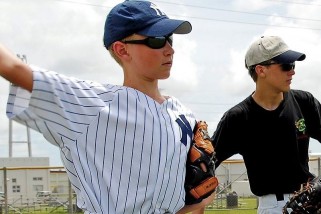BreakingModern — As one of the world’s most valuable food brands, Starbucks Coffee has long been an innovator in customer convenience. Its payment app was updated in 2014 to allow customers to shake to pay, as well as tip electronically, but customers are still required to stand in line to place orders. With the launch of a new app Starbucks stands to change that as well.
Portland, Oregon customers can now order directly from their smartphones when they are near the store. Instead of reading an order to a barista, mobile-device owners can choose food and beverages, customize them to their individual preferences and pay. The order will be sent to baristas, who will begin preparing the order for pickup. Starbucks plans to roll the program out nationally in 2015, as well as open it up to Android-device users.

The Growing Popularity of Mobile Ordering
Starbucks isn’t the first restaurant to deploy online ordering. Taco Bell’s app lets customers order food from anywhere for later pickup. The customer simply checks in upon arrival at the location and employees begin preparing it. The entire process allows customers to choose items from the screen and pay through the app, allowing them to walk in or arrive at the drive-thru and pick the item up.
A startup called Preo lets customers order using an iPhone or Android device at a variety of New York bars and coffee shops. While the app is limited to a small selection of locations at the time of writing, this type of general app could take off and soar, the way services like GrubHub have. Mobile ordering and payment is especially beneficial in bars and coffee shops, since employees are usually challenged to handle large crowds.
Table Payments
Full-service restaurants are moving closer to mobile device tabletop ordering, as well. Applebee’s and Chili’s have both installed tablets at tables that allow customers to order and pay for food. Servers still approach the table when customers arrive and often take orders, but both chains now encourage customers to pay when they’re ready to leave by tapping a button, scanning a card and signing using an index finger.

Palo Alto, California restaurant owner Charlie Ayers installed the tablets only to find many customers still prefer the old-fashioned way of ordering and paying. Approximately 65 percent of Ayers’ customers don’t use the tablet at all, even to pay, he says, stating that he believes the heavy infiltration of tech workers in the area is the reason. After working on computers all day, he feels that they simply want the human touch while eating dinner.
The reluctance of most of Ayers’ customers to use technology for ordering leaves room for doubt. Is it simply old habits that tie consumers to traditional ways of ordering and paying? If so, the technology adoption life cycle may be at play, with consumers eventually accepting the change and demanding it for any restaurant they frequent.
For the time being, stores like Starbucks may have the most success with app-based ordering. Since many of the chain’s customers are frequent, online ordering may be ideal for them, especially since it will cut the need to wait in line to place the same order they request every day.
For BMod, I’m Stephanie Faris.
First/Featured image: © Tsiumpa / Dollar Photo Club
Second image: © ty / Dollar Photo Club







![Pete Rose Continues to be Out of Step with Major League Baseball [commentary]](../wp-content/uploads/2015/10/HEADER2-321x214.png)



![The Legend of Zelda: The Wind Waker HD [review]](../wp-content/uploads/2015/10/HEADER-321x214.jpg)
![Madden NFL Mobile [review]](../wp-content/uploads/2015/09/header3-60x60.jpg)

![Call of Juarez: Bound in Blood [review]](../wp-content/uploads/2015/09/HEADER--60x60.jpg)
![Command & Conquer: Red Alert 3 [review]](../wp-content/uploads/2015/09/HEADER-60x60.jpg)